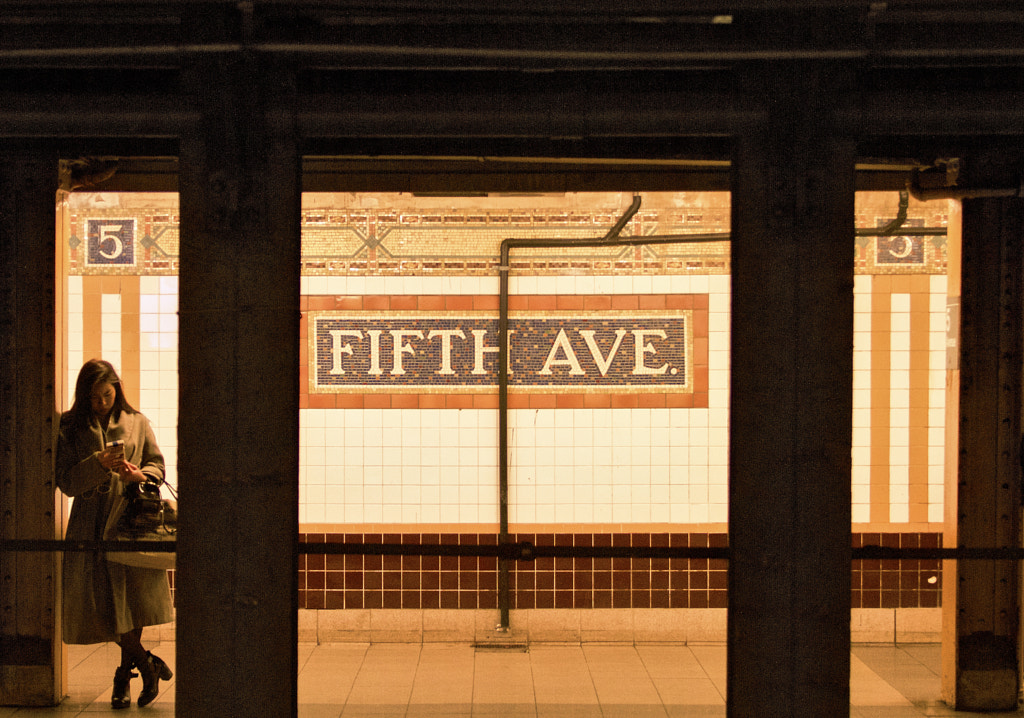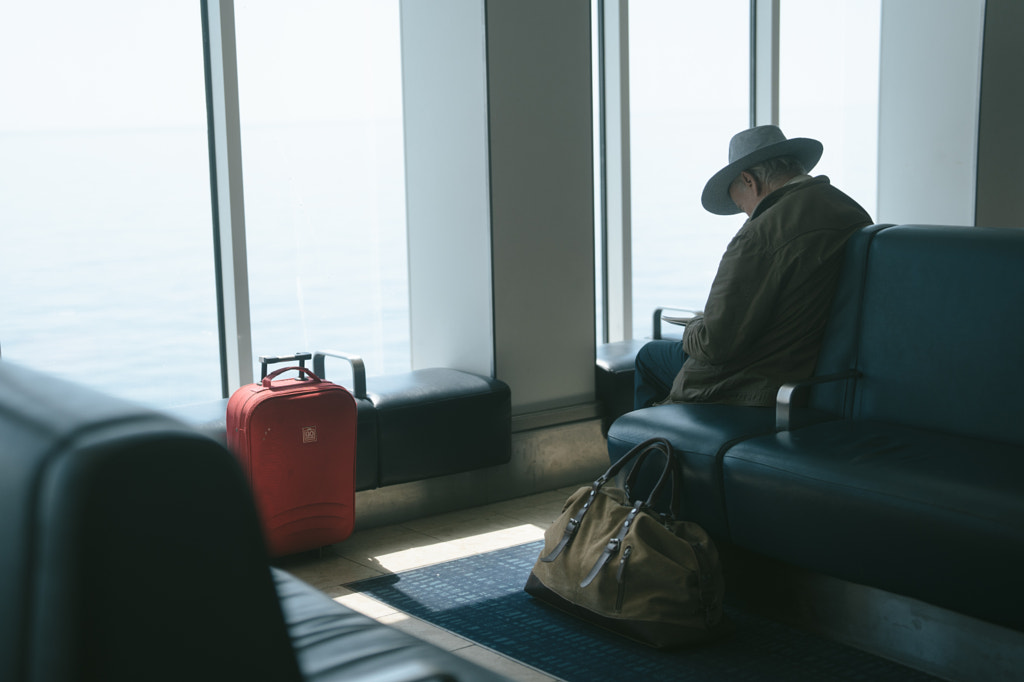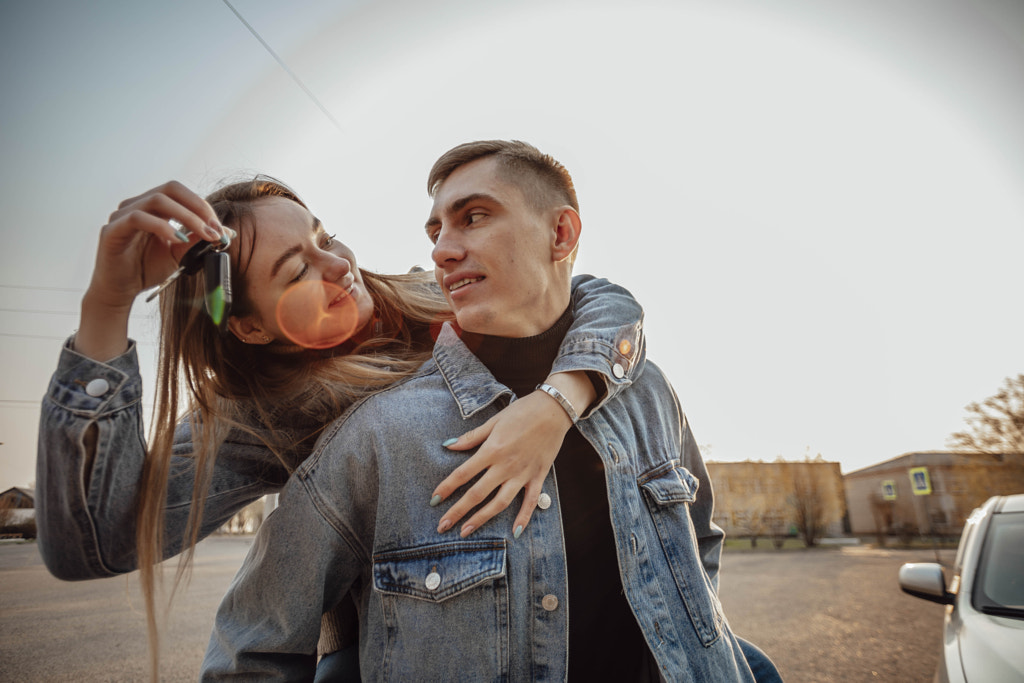From Richard Sandler and Bruce Davidson in the 1980s to Michael Wolf in the 2000s, generations of street photographers have found inspiration in the many faces and stories waiting to be discovered on public transportation. Today, the bus remains one of the rare places where people of all ages and from all walks of life collide. Similarly, two strangers who might never meet in “everyday life” might encounter one another on the subway, if only for a brief moment.
Walker Evans once called the New York City subway a “swaying sweatbox,” alluding to the idea that underground, on their way from one place to the next, people are at their most unselfconscious. With everyone packed in like sardines, there’s no room for vanity. Plus, since nobody’s going anywhere, they have to make the most of the time they have—reading, sleeping, eating, and daydreaming.
Whether you’re carrying a classic film camera or the latest iPhone, public transportation remains a street photographer’s playground. Here are our tips for making the most of the daily hustle and bustle.
Tip #1: Be discreet
The secret to street photography, especially in cramped places like the subway or bus, is going unnoticed. In the 1930s, Walker Evans, for his part, hid his 35mm Contax camera inside his coat when working on the subway, but today’s photographers have an easier solution.
Phones are unlikely to draw any attention, so consider your mobile instead of your pro DSLR. Lorenzo Colombo, for instance, photographed this commuter with a giant wolf stuffy using his smartphone.
Alternatively, if you need a dedicated camera, you might choose a mirrorless camera for its compact size and silent shutters. Wear simple, dark clothes that will allow you to blend into the crowd.
Tip #2: Choose a prime lens
If you’re using an interchangeable lens camera, an affordable 35mm or 50mm lens is a good place to start. Prime lenses are a street photographer’s best friend because they’re lighter and more inconspicuous. Prime lenses also force you to get in close (“zoom with your feet”), and they train you to “see” with that focal length in mind and make decisions on the fly.
If you want to go wider, you can try a 28mm, another frequent choice. For example, the Leica Q2, a popular camera among street photographers, has a 28mm f/1.7 lens (very fast!).
Tip #3: Make sure you’re getting enough light
When you’re shooting handheld in the street, a slow shutter speed is rarely an option, so you’ll have to compensate with your other camera settings. If you’re working in low-light conditions (such as the subway), you might consider a fast lens with a wide maximum aperture (fair warning: these tend to be pricier).
Of course, another option would be to bump up your ISO, if your camera can handle it without introducing too much noise. This is the way to go if you need to preserve a wider depth of field. In that case, a bit of noise is almost always worth it for a well-exposed photo.
Tip #4: Go somewhere you’ve never been before
I once spoke with a street photographer who visits a new neighborhood every time he’s looking for inspiration. Then he finds a way to get there, using only public transportation. This exercise is perfect for street photographers at all stages of their careers, so try it to get out of your comfort zone.
Look for a neighborhood with history and culture, and check out local travel blogs for ideas. Or you can even just choose a random spot on the map (make sure it’s safe first). If it’s a long trek via subway and bus, so be it: embrace the journey, and always have your camera ready to capture those fleeting moments.
Tip #5: Look out the window
If you’re riding above ground, moments won’t only take place inside but outside as well. When your bus stops at a red light, look around you and the people walking past. Shooting through the window of a moving bus can be a great way to capture candid moments on the sly.
Tip #6: Wait in one location
Places of transition—such as train stations, subway entrances, and bus stops—are ideal for capturing people at unguarded moments, when they’re busy texting friends, looking at a map, or even sneaking in a quick nap. In addition to the actual buses and subway cars, consider these “in-between” places as well.
If you’re in an outdoor location, wait for the golden hour when you’ll get those gorgeous long shadows and people commuting home from work. The morning and afternoon rush hours can be ideal for this reason. Find a spot where you know people will pass, and then wait until the perfect opportunity strikes.
Tip #7: Look for moments of stillness and solitude
The advantage of shooting street photography on public transportation is that there are so many people in one place—but that’s also a challenge. Stay mindful of clutter and visual noise, and don’t be afraid to seek out solo/individual subjects, set against a clean background.
You might have to make several trips to the same location during different hours of the day (or night) until you find the right balance of activity and calm. In the street portrait by Charles Lafrance (above), the red of the man’s coat and cane sets him apart from the surrounding scene, creating contrast, isolation, and a pop of color.
Tip #8: Play with color
Speaking of color, train cars and buses can offer a bouquet of hues, so don’t be afraid to shoot in color. Consider pairing complementary colors—such as blue and orange, yellow and purple, or red and green—for an especially vibrant image. In this photograph by David Thompson Fairchild, the resting boy’s blue coat works beautifully with the bright orange seats.
Tip #9: Notice the details
As evidenced by the massively popular Instagram feed Subway Hands, which was created by the photographer Hannah La Follette Ryan, there’s beauty to be found in the details of ordinary life.
Not all street photographs need to include faces; it could be an unusual hat, a bouquet of flowers, or even a manicure that catches your attention and helps tell the story of your city. In this portrait by Andriy Ivaniuk, the old man’s head is facing the other way—at the time, the trolleybus was almost empty—but the quiet gaze of the dog drew the artist’s eye.
Tip #10: Be kind and transparent
To some extent, street photography is always daunting because you’re working with strangers, but the situation on public transport can be especially claustrophobic, so it’s important to respect people’s personal space. Use common sense, and trust your gut.
Here’s the good news, in case you’re nervous: the vast majority of people are unlikely to notice you, as they’re all busy doing their own thing. But if you do get spotted, just tell the truth, with a smile: you’re a street photographer, and the person and moment inspired you.
Instead of driving to work or taking the car to run errands, consider taking the bus or train next time. It might take longer, but you’ll be surrounded by people, and in the process, you’ll discover more opportunities for taking photos that you otherwise would have missed.
Not on 500px yet? Sign up here to explore more impactful photography.
The post Why public transportation is the best place for street photography appeared first on 500px.
[NDN/ccn/comedia Links]
























